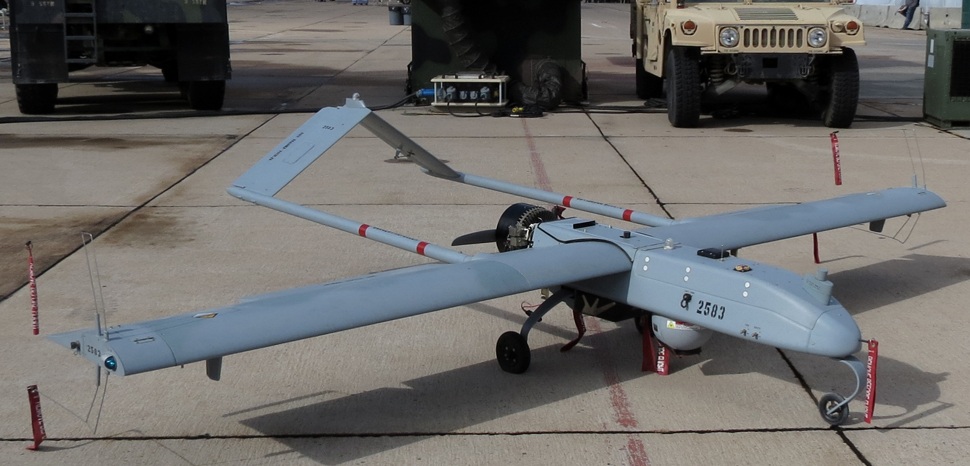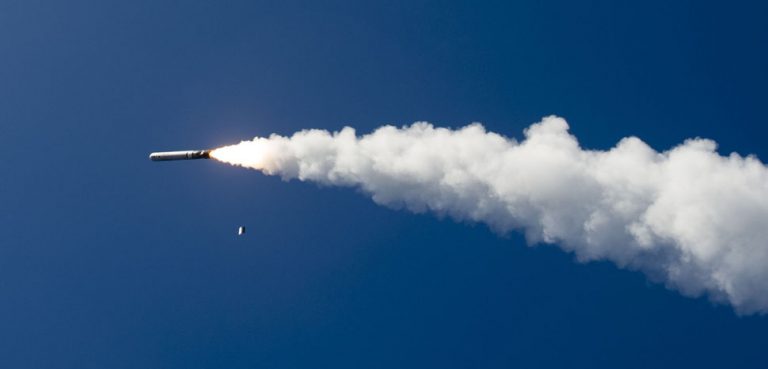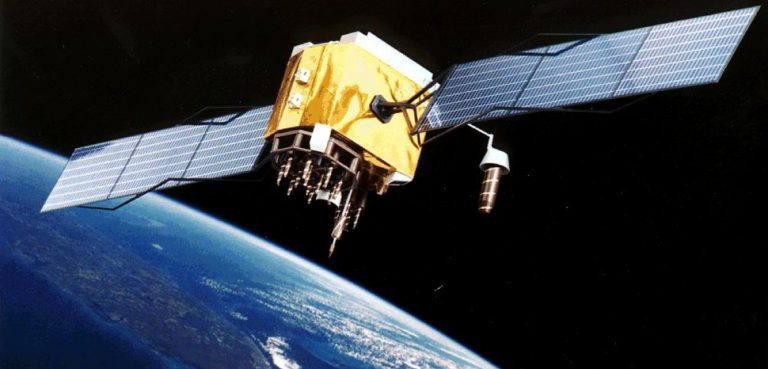Unmanned systems with a variable degree of autonomy, generally known as ‘drones,’ have become commonplace in the world’s advanced militaries. In their various aerial, maritime, and ground forms, these vehicles are used to perform a wide spectrum of roles. Yet advances in new technologies such as artificial intelligence (AI), robotics, and data fusion may revolutionize their employment by enabling large numbers of drones to operate in a coordinated and reactive manner. If fully developed, this concept – known as ‘swarming’ – could have profound tactical and strategic effects; possibly to the point of changing the nature of warfare in the 21st century.
The Current State of Drone Warfare
Today, unmanned systems of different types are used by the militaries of various countries. Here it is necessary to make some important distinctions. First, even though flying platforms (unmanned aerial vehicles, UAVs) are the most common and the ones that are primarily associated with the term ‘drone’ in the collective imagination, they not the only kind of unmanned systems in use. In fact, there are also land-based systems (unmanned ground vehicles, UGVs) and naval platforms, which are in turn divided into two further sub-categories: unmanned surface vehicles (USVs) and unmanned underwater vehicles (UUVs). Second, not all platforms possess the same level of autonomy. Most are actually remotely piloted systems, but there are also fully autonomous drones capable of functioning without the (direct) intervention of human operators; one example being the US Navy’s experimental X-47B. Finally, not all drones can engage targets with weapons. While there are many examples of remotely piloted aerial systems (RPAS) that carry missiles or bombs – such as the iconic US-made MQ-1 Predator and MQ-9 Reaper – fully autonomous platforms are much less likely to be armed due to ethical concerns and technological limitations regarding targeting and with respect to rules of engagement. As a matter of fact, lethal autonomous weapon systems (LAWS) have been the object of a coalition of NGOs known as “Campaign to Stop Killer Robots.” Yet, there are drones capable of autonomously engaging targets such as Israel’s Harop (Harpy 2), a ‘kamikaze’ platform designed to detect and destroy enemy radars.
That said, drones are employed to carry out various types of missions. These include intelligence, surveillance, and reconnaissance (ISR); search & rescue (S&R); logistics; mine-sweeping and destruction of improvised explosive devices (IEDs); armed patrol; and even targeted killing. In such cases, drones operate on their own or in small numbers, and each is piloted by its own operator(s). However, advances in AI, robotics and data fusion may not only pave the way to fully autonomous systems capable of independently performing complex missions, but may also enable complex cooperation in a way that could radically change warfare.
The ‘Swarming’ Concept
A paper by the US Air Force defines swarming as “a group of autonomous networked SUAS [small unmanned aircraft systems] operating collaboratively to achieve common objectives with an operator on or in the loop.” Coordination and reactivity are of paramount importance, since they represent the key distinction between a real swarm and the employment of drones en masse. The latter occurs when a large number of drones is used against a single target, mostly in order to overwhelm it by saturating its defenses. Yet, each platform is controlled separately from others, and there is no datalink coordination between the drones themselves (even though the pilots can, of course, coordinate their action). On the contrary, drones operating in a swarm are all interlinked and in constant communication with each other. There is no clear threshold on the quantity of drones that must be connected to create a swarm, with figures ranging from a few hundreds to billions, also depending on their type and size. What is important is that they share information from their sensors and take AI-driven collective decisions toward the achievement of a single goal. This datalink and the AI software are therefore essential in creating the ‘hive mind’ that defines a swarm and allows it to effectively function; and each single drone forming a swarm is just a small component playing a specific role in a greater system which self-coordinates the actions of its elements in a dynamic manner. Certain drones would use their sensors to locate and track targets, sharing the information with the rest of the swarm; others would perform jamming and electronic warfare tasks; another category would engage hostile forces, etc. The swarm as a whole would react dynamically to changes in the battlespace by performing complex non-linear and counter-intuitive maneuvers.
It is therefore clear that swarming holds an immense potential, to the point that it may revolutionize warfare. Since they can patrol large areas with greater efficiency and shorter reaction times than human personnel, thus speeding up operations without risking the loss of lives, swarms would be particularly suited for search & destroy missions against enemy air defenses, submarines or mobile missile launchers; but also for ISR as well as counter-insurgency, over-the-horizon targeting, air combat, and anti-access / area denial (A2/AD). Symbiosis with manned platforms is also possible: For instance, F-35 fighters equipped with advanced data fusion software could control swarms and use them as force multiplies. Of course, creating a functioning and effective swarm requires top-tier technology in terms of both software and hardware; as it needs a powerful AI, advanced sensors, and powerful data links. Accordingly, swarms will probably take decades before being deployed and they will likely remain exclusive of high-tech militaries of developed countries.
Even though at present swarming remains largely theoretical and is still under development, major military powers like the US, China, Russia and others have shown a great interest in this concept and have already invested considerable resources in its development. For instance, in 2016 a US project successfully launched a swarm of 103 Perdix drones from three F/A-18 Super Hornet fighters. Given the pace of technological advances over the past two decades, one can assume that swarming will only grow in importance in the near future, potentially altering the nature of warfare in the 21st century.
The Strategic Impact of Drone Swarms
On the geopolitical level, it has been argued that swarms would continue the shift toward a ‘more-than-human’ geopolitics, where robotics and AI play a central role in the unfolding of events, and where the ‘Baseworld’ (the global net of military bases) constituting the framework of US power projection capabilities turns into a ‘Roboworld’ made of small lily pads scattered across the globe, which would virtually contract the spatial distances thus enabling the US to exert its power anywhere and almost constantly. As far as the United States’ near-peer competitors are concerned, experts believe that swarms may boost China’s A2/AD capabilities and hamper freedom of navigation in the South China Sea; whereas for Russia, other than being A2/AD assets, they will also be extremely useful as force multipliers to compensate its manpower shortage through automation (which represents an important aspect of its military modernization, to the point that by 2025 it aims to have 30% of its entire military force composed of drones). In both cases, swarms may also empower them to quickly overcome weaker neighbors such as Taiwan or Ukraine, just to name two.
On the purely military plan, swarming could be the next step in the evolution of warfare, representing a real quantum leap when compared to traditional maneuver warfare. The large-scale coordination between interconnected systems acting as a single and reactive entity would shorten the reaction times and compensate for individual vulnerability with the swarm’s collective resiliency; thus significantly enhancing the warfighting capabilities of the armed forces deploying swarms and constituting a remarkable advantage over traditional militaries. This is the reason why major powers are interested in the concept and are seeking to gain an upper hand in the field.
However, this has raised fears of a new arms race centered on AI and automation that could have destabilizing consequences at the international level. The reason is twofold. First, there are concerns that the possible over-effectiveness of swarms in search & destroy operations could undermine nuclear second-strike capabilities, which are largely based on mobile transporter erector-launchers (TELs) and on ballistic missile submarines. This would be particularly destabilizing for countries like China who have a rather small arsenal and whose retaliation force is centered upon a relatively small number of TELs and underwater vessels. Even though the real entity of this danger is debated and possibly overestimated, the perceived threat may be per se sufficient to destabilize the nuclear-based strategic equilibrium. Second, and partially linked with the previous point, the speed and efficiency of swarms compresses the reaction time for decision-makers to determine their course of action, thus prompting a ‘use it or lose it’ logic that would increase the likelihood of escalation, possibly to the nuclear stage. This problem, which becomes more acute in the case of a crisis, is also linked to other systems that have already been deployed (anti-satellite weapons) or that are being introduced (hypersonic missiles); and their potential combination may have mutually-reinforcing destabilizing effects whose consequences could be catastrophic.
Looking Ahead
Even though it is at the early stages of development and experimental application, swarming is a concept that could radically change the nature of warfare in the coming decades. Given the technical complexity and the high costs of the necessary know-how, it is reasonable to assume that swarming will be the prerogative of major military powers, who would enjoy a significant advantage against both regular forces deprived of analogous capabilities and against insurgents thanks to the swarm’s capacity to ensure a quasi-permanent and reactive monitoring over a large area.
Obviously, there are notable obstacles on the way: apart from legal and ethical issues, mastering the technology will take considerable time and investments; moreover, the swarm’s effectiveness depends on the stable connection between its component and the proper functioning of the AI governing it, thus making it vulnerable to spoofing, jamming, cyber-attacks or simple technical malfunctioning. It is sure that as swarms are deployed and become more advanced, new efforts will be made to develop effective countermeasures. Considering the inherent decentralization of swarms and their ability to quickly react in a complex non-linear and counter-intuitive manner, it is likely that the best counter-swarm weapon will be another (larger and/or more advanced) swarm. What is certain is that drone swarms hold an enormous potential, and given the interest that major military powers are expressing toward this emerging technology, it is likely that drone swarms will eventually become a prominent feature of 21st century warfare.
*Originally published on June 15, 2020.




